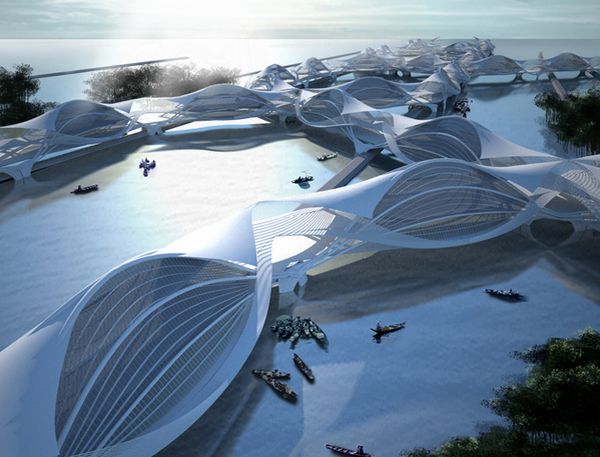
The Problem:
Thailand’s capital, Bangkok is sinking. The sea levels around the country are rapidly increasing. The city was built around 300 years ago. The development of the city has caused damage to the underground aquifers. So, it is unable to handle flood water. The city is surrounded by water polluted due to Thailand’s farm industry. The situation worsened due to the ongoing developmental projects which aggravates the country’s pressing environmental problems.
How Serious It Is:
Bangkok government considers flooding a crisis and not a continuous problem. This mindset is contributing to the economic loss of the city which is been occurring since a couple of years. Due to this, the city is sinking 10 centimetres below the sea level and later it rises 40 centimetres annually.
The Panacea:
Architects have proposed a prototype community which helps translate the principles of the flood conscious, traditional architecture into a contemporary and a sustainable Wetropolis. The project is working on the supra marine stilt home community of Koh Pan Yii. This is a type of settlement which floats on the Indian Ocean near the Andaman island, located on the southern part of Thailand. This settlement is successful in sustaining all types of typical functions of an urban community like hospitals, schools, public spaces, utilities and industry. This proposal will advance the concept by reducing its footprint on water by continuing the cultivation of mangrove forests.
The forest will provide the community with essential carbon dioxide that mitigates flora which is the essential natural effluent filtration system. This is the only green space in Bangkok which has the moderate local shrimp farming. This community will get elevated above the acres of underutilized shrimp farms. This aligns the interest of the urban people, shrimp farmers, government and the developers by sustaining the modest shrimp farming and sustaining mangrove restoration.
The Inspiration:
The new water-world style city plan known as Wetropolis will help sustain vegetation. The Wetropolis will allow Bangkok to deal with the natural flooding in an efficient way. The Wetropolis will permit vegetation to grow on the marshes that forms a homeostasis which causes detoxification on the Bangkok’s polluted environs.
The Problems:
The city is surrounded by polluted water fields all over. The water fields and the buildings on them have aggravated the city’s sinking state. The increasing population and the development of the city have caused the underground aquifers to exhaust. The aquifers control the flood water.
The Alternatives:
1. Lily pad floating city concept:
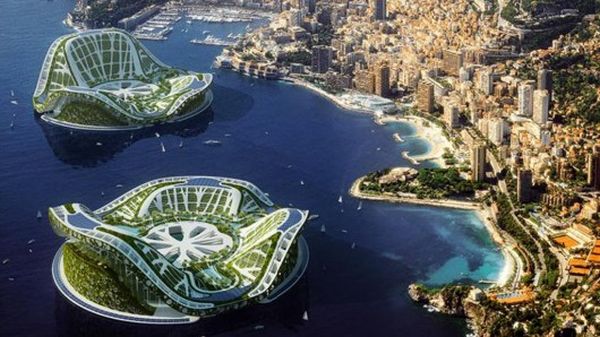
As the sea levels are rising due to climatic changes, most of the people living in the low lying areas are expected to lose their homes. Architect Vincent Callebaut has come up with a concept which will relocate these people due to the climate change known as the Lily pad concept. This is a self sufficient floating city which would accommodate 50,000 people.
It has a shape of a ribbed leaf of Victoria water lilies. It is made of the double skin of a floating ecopolis which would consist of polyester fibers. The fibers are covered by a titanium dioxide layer. This would react with ultraviolet rays and absorb atmospheric pollution through a photo catalytic effect.
2. Embassy of drowned nations:
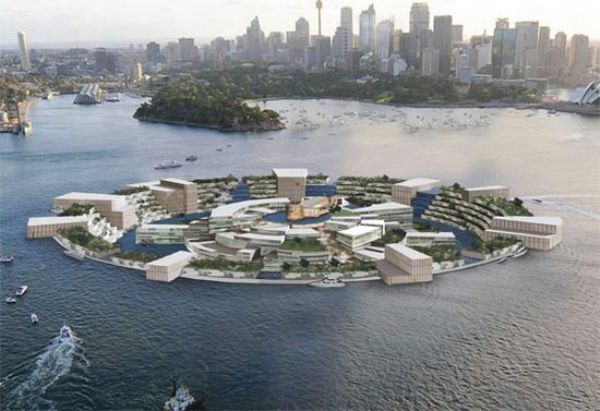
Oculus has proposed a new floating refuge which is known as the Embassy of Drowned Nations which is located in fort Denison, Australia. It is the dynamic inverted island which is a blend of Eden and Atlantic and will serve as a safe haven for those who have lost their home due to rising sea levels. The embassy will help for temporary housing and also to spread awareness among the people about the rising sea levels. The innovative design of the island will cause it to sink deeper in the harbor as the water level rises. At the same time, the new land will rise in the center part of mini-city. This new land will be given to the people who have lost their homes due to rise in water levels.
3. BoA:
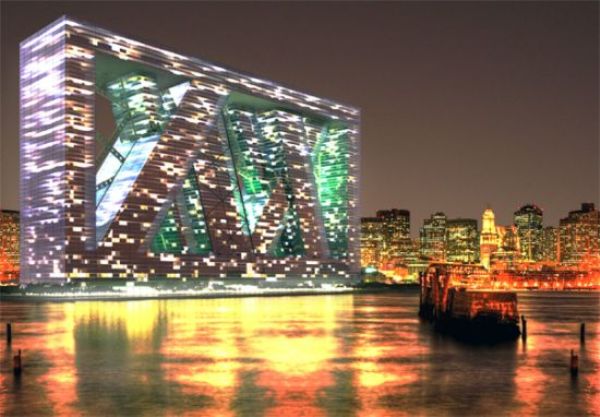
The Boston Arcology has been designed by E. Kevin Schopfer. It will provide dry and safe living space to almost 15,000 people who have lost their homes due to the rising oceans. This floating city will give housing facilities as well as offices, hotels, museums, condominiums, and a city hall. This floating city will have a sky garden which would be inserted into three main towers of every 30 floors. These sky gardens will give sunlit units and will give a sense of neighborhood and will help the architecture sustain.
This design will remove all the needs of cars within the urban structure which will create a carbon neutral entity. These structures will consist of a fresh water recovery systems, secured wind turbines, passive glazing system, gray water treatment facilities, sky garden heating/cooling system, harbor based water turbines, and photovoltaic systems.
4. Harvest city in Haiti:
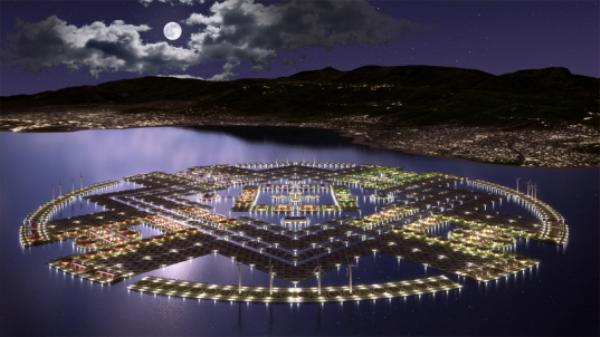
This city is again designed by the Boston-based architect E. Kevin Schopfer. It is a floating, agricultural city with light industries located off the shores of the island. The harvest city is a vibrant fully functional city which would accommodate 30,000 residents and house three major concepts.
- A city, which is designed on the principle of Arcology (architecture and ecology), which would embody an ecological sustainable urban platform.
- It is a creation of a floating, artificial, livable and productive land which would be needed by the people to live in.
- The harvest city would be established as a “Charter City”. A Charter City is the newly advanced economic model which is developed for all the struggling nations.
The harvest city would be the first floating city of Haiti. Harvest city is composed of two third agriculture areas and one third light industrial area. The overall city is divided into four types of zones which are interconnected by a linear canal system. These canals will focus on the built neighborhoods that consist of four storey housing complexes. The pouter perimeter is designed of one acre crop circles. The inner harbor will house the city center which would consist of community activities, schools, administrative and a market place. The whole complex would float and would be secured by a cable to the sea bed.

